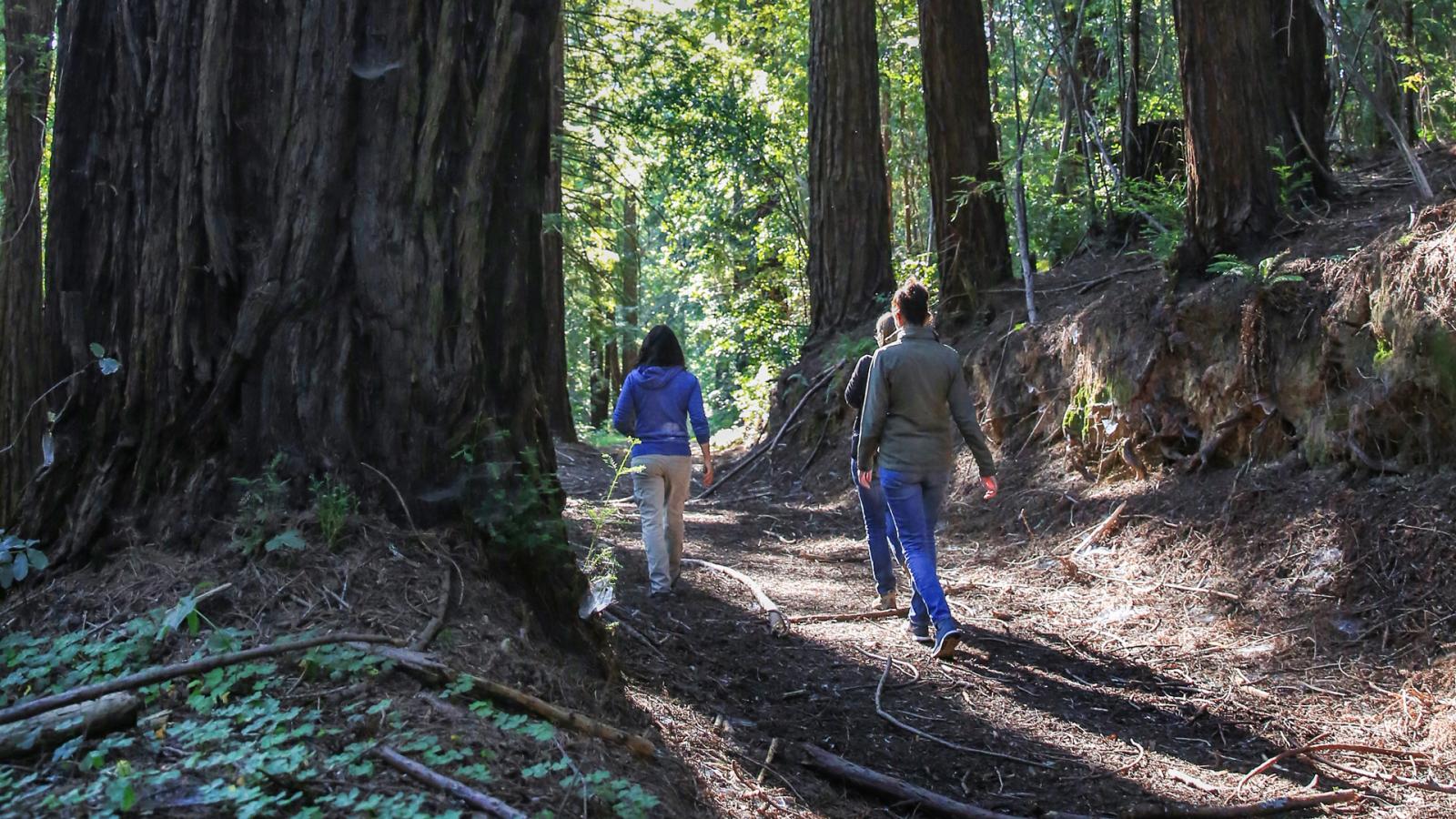Learning from Science and our Partners About Restoring Second-Growth Forests
Building on the success of forest health projects done by partners, Midpen is assessing the potential benefits of a similar restoration forestry project to improve the health of 1,210 acres of redwood forest in our La Honda Creek Open Space Preserve.
About half (30,000 acres) of the land Midpen manages in the Santa Cruz Mountains are forest and woodland habitat, nearly all of which have been significantly altered by historic clear-cut logging and dense regrowth, fire suppression and accumulation of vegetation, sudden oak death and climate change.
“We’re left with second-growth forests that are much less diverse and two to four times denser than old-growth stands,” Midpen Senior Resource Management Specialist Aaron Hébert said. “If we look at what makes a forest healthy — tree size and spacing, different kinds of trees, irregular tree tops that support wildlife like marbeled murrelets, openings in the canopy, wood decaying on the forest floor and wood in the creeks — restoration forestry introduces treatments designed to get things headed in the right direction.”
Restoration forestry projects start with an assessment of current conditions, then a prescription that matches the benefits of different treatment alternatives with the goals for that particular stand of trees in terms of forest health, habitat value, fuel reduction and carbon storage. Demonstration projects often include a control area that is not treated so the work can be evaluated in 15-20 years.
While only time can create old-growth forests, science shows restoration forestry practices can accelerate the pace at which second-growth forests transform into mature, diverse forests that provide better wildlife habitat, carbon storage, and resilience to disease and fire.
“Today’s challenges mean that we need to go beyond simply preserving land,” Midpen General Manager Ana Ruiz said. “We have to also actively manage these lands to improve habitat, to reduce fire risk and to counter climate change. Our partners have demonstrated that restoration forestry can make a difference in forest health and resilience.”
Related Projects
Highway 236
In 2012, Sempervirens Fund thinned small-diameter redwoods on a property they preserved near Highways 236 and 9 in the Santa Cruz Mountains. Despite five years of historic drought, the growth rate in the thinned areas was 72% greater than in the untreated areas. Another evaluation is planned for 2027.
San Vicente Redwoods
A collaborative comprised of the Sempervirens Fund, Save the Redwoods League, Peninsula Open Space Trust and Land Trust of Santa Cruz County performed restoration forestry at this recently preserved Santa Cruz County site to improve forest ecosystems.

